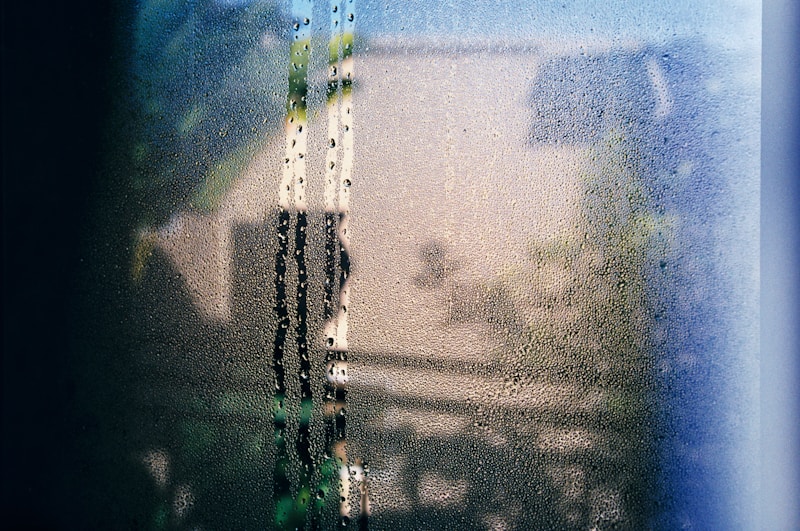18 Questions
Why are higher heat-transfer rates experienced in dropwise condensation compared to film condensation?
Lack of film barrier in dropwise condensation
Why is dropwise condensation preferred over film condensation?
It experiences higher heat-transfer rates
What makes maintaining dropwise condensation difficult over time?
Wetting of most surfaces after exposure to condensing vapor
Which method has not been successful in maintaining dropwise condensation according to the passage?
Decreasing the surface area exposed to vapor
What effect does cupric oleate coating have on the condensation process?
Facilitates dropwise condensation
What influence does a thermocouple probe have on the steam condensation process depicted in Figure 2?
Has no direct effect on the process
What is the main difference between film condensation and dropwise condensation?
Film condensation involves a smooth film forming on the surface, while dropwise condensation involves droplets forming in a random fashion.
What happens if the temperature of the plate is below the saturation temperature of the vapor in condensation heat transfer?
Condensate will form on the surface.
What does dropwise condensation refer to?
Random formation of droplets on the surface.
How can film condensation be described in terms of thermal resistance?
The film represents a thermal resistance to heat transfer.
Why is it important for a chemical engineer to understand boiling and condensation processes?
To design appropriate heat transfer equipment.
What is characteristic of film condensation on a vertical flat plate?
Thickening of the film as it moves down the plate.
What does the equation 𝛿𝑀𝑎𝑠𝑠 𝑓𝑙𝑜𝑤 = න 𝜌 𝑢 𝑑𝑦 represent?
Rate of mass flow of condensate through any x position of the film
By using the boundary condition that u=0 at y=0, what value was determined?
The value of the constant (C=0)
What is a key result of integrating the equation 𝜌𝑙 − 𝜌𝑣 𝑔 𝑦2 𝑢= 𝛿𝑦− +𝐶 𝜇 2?
Finding the rate of liquid flow through a film
What does the equation 𝛿 𝑚ሶ = න 𝜌𝑙 0 𝜌𝑙 − 𝜌𝑣 𝑔 𝑦2 𝛿𝑦− 𝜇 2 𝑑𝑦 represent?
Rate of mass flow at y=0
What is the derivative with respect to x of the function m(x) = 3𝜇𝑙?
$\frac{d}{dx} (\frac{g(\rho_{l}-\rho_v)\delta}{\mu l})$
What does the formula $m(0)$ represent in the context of condensation process?
$m(0)$ signifies the rate of condensation at a distance x=0
Study Notes
Condensation Types
- There are two types of condensation: film condensation and dropwise condensation.
- In film condensation, a smooth film is formed on the surface, and the process is characterized by a temperature gradient in the film.
- In dropwise condensation, droplets are formed that fall down the surface in a random fashion.
Dropwise Condensation
- Dropwise condensation has higher heat-transfer rates, up to 10 times higher than film condensation.
- However, it is extremely difficult to maintain due to surface wetting over time.
Film Condensation
- In film condensation, the surface is blanketed by the film, which grows in thickness as it moves down the plate.
- The film represents a thermal resistance to heat transfer.
Plate Coating Effect
- The effect of plate coating on the condensation process can be seen in Figure 2, where the right side of the plate is clean copper and the left side has a coating of cupric oleate.
- The coating promotes dropwise condensation.
Heat Transfer and Condensation
- Boiling and condensation are classified as forms of the convection mode of heat transfer.
- Condensation heat-transfer phenomena involve the change of a vapor to a liquid or a liquid to a vapor.
- The chemical engineer must understand the processes involved to design the appropriate heat transfer equipment.
Mass Flow of Condensate
- The mass flow of condensate through any x position of the film is given by the equation: 𝛿 𝑚ሶ = 𝑚ሶ = න 𝜌 𝑢 𝑑𝑦.
- The equation can be integrated and solved using the boundary condition u=0 at y=0.
Rate of Condensation
- The rate of condensation of vapor over a vertical distance dx is given by the equation: 𝑑𝑚ሶ 𝑔𝜌𝑙 𝜌𝑙 − 𝜌𝜈 𝛿 2 𝑑𝛿 = 𝑑𝑥 𝜇𝑙 𝑑𝑥.
Explore the concepts of boiling and condensation as forms of the convection mode of heat transfer in power and refrigeration cycles. Gain an understanding of how vapor is changed to liquid and vice versa in different parts of a cycle.
Make Your Own Quizzes and Flashcards
Convert your notes into interactive study material.




